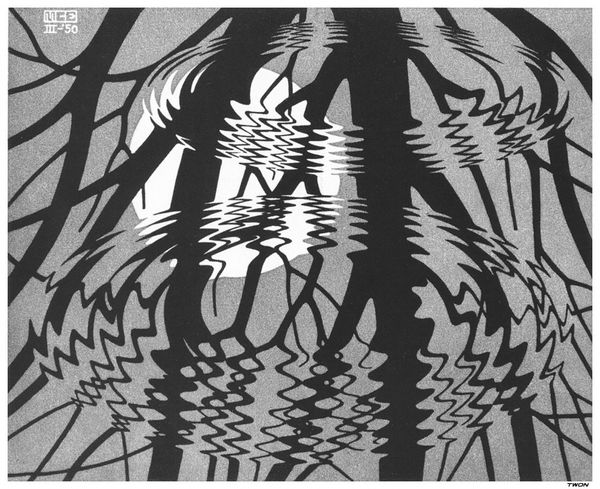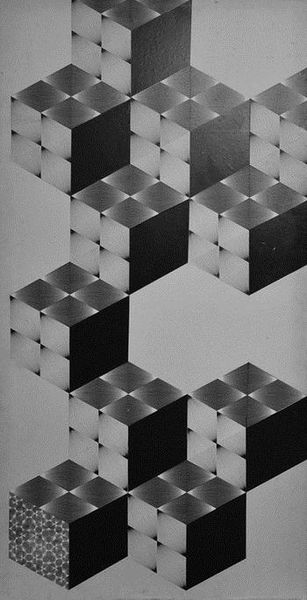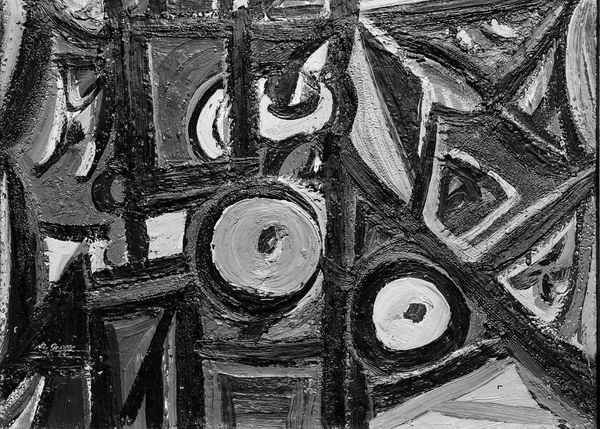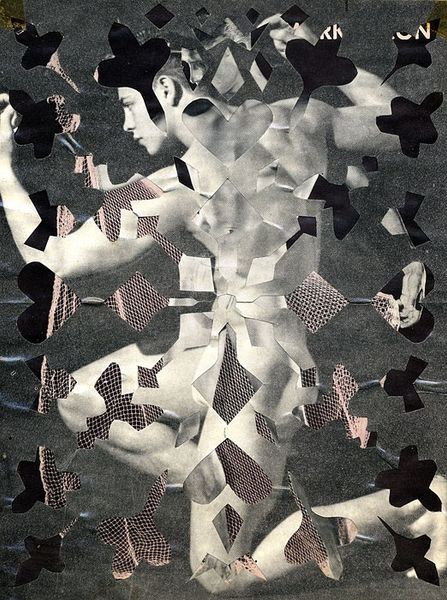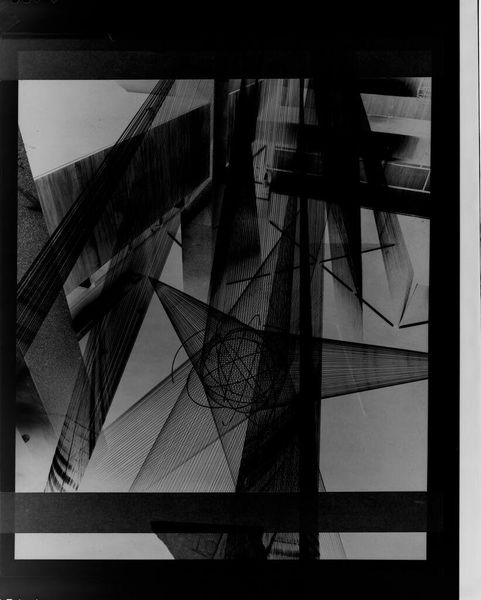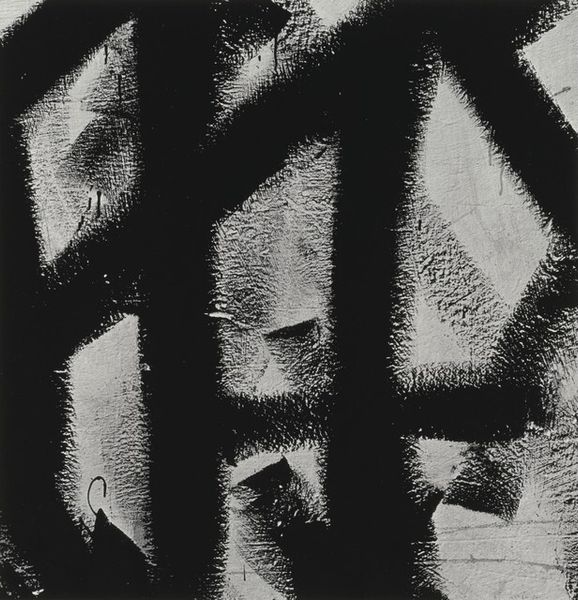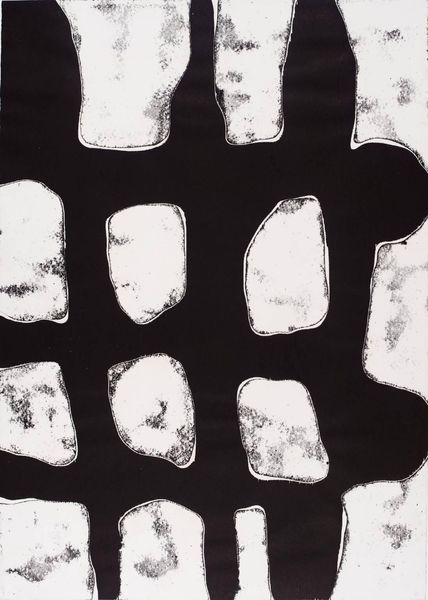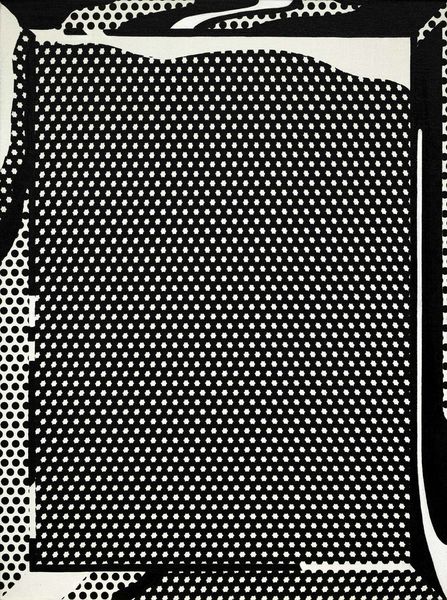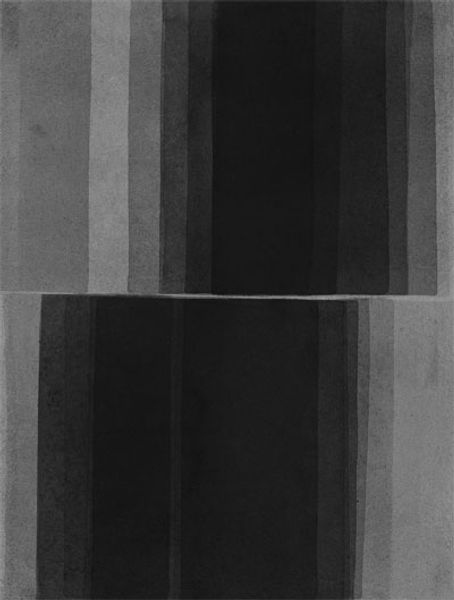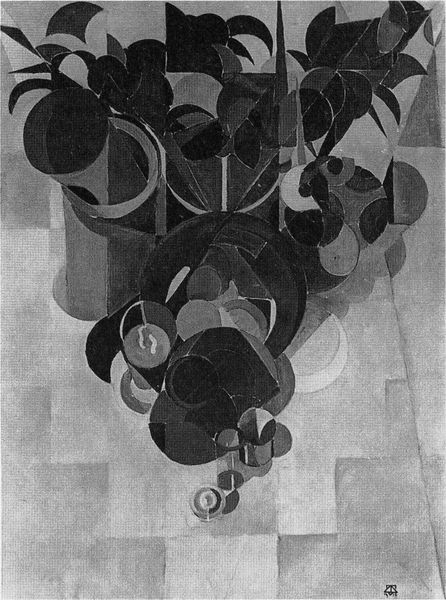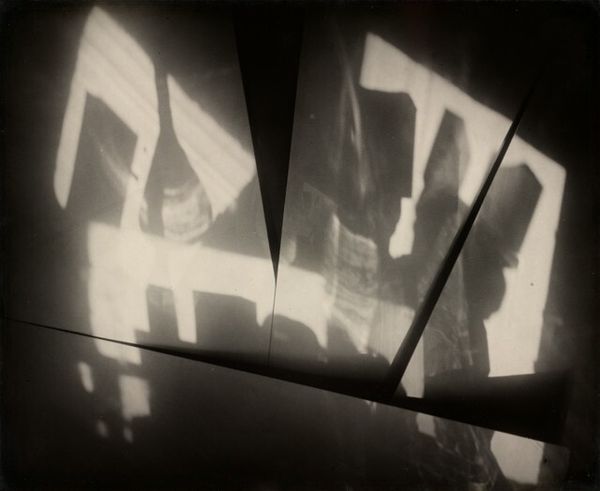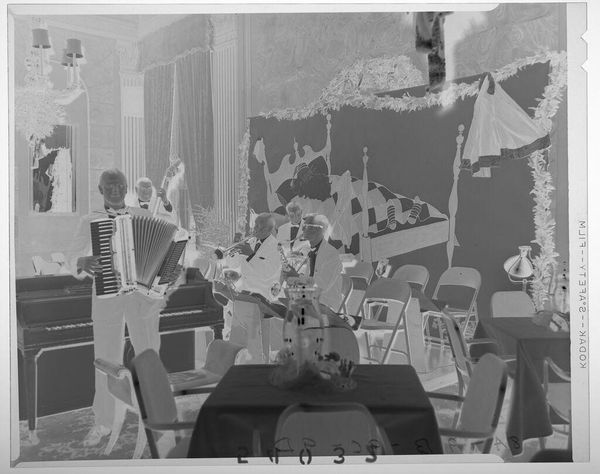
drawing, photography, graphite
#
drawing
#
pattern
#
form
#
geometric pattern
#
photography
#
geometric
#
geometric-abstraction
#
line
#
graphite
#
modernism
#
monochrome
Copyright: M.C. Escher,Fair Use
Editor: So this is M.C. Escher's "Flat Worms," a graphite drawing from 1959. It’s quite striking with the monochrome palette and repetitive geometric shapes, and there’s an odd sense of playful claustrophobia that I find interesting. What do you see in this piece? Curator: Escher’s work exists at the intersection of art and mathematics, reflecting a mid-20th century fascination with the illusory and the paradoxical. Look closely, and you’ll notice how the tessellated planes warp and shift, blurring the lines between two and three dimensions. Where do you see this tension represented in a broader sense? Editor: Hmm, I guess in how the flatworms, these kind of simple figures with huge eyes, navigate what seems like impossible architecture? It’s a contrast. Curator: Exactly! Consider the context of the Cold War era when this was made. Could the anxiety of existing within rigid systems, or the limitations placed on individual agency, be reflected in these impossible spaces that simultaneously charm and constrain? Editor: I never thought of it that way. I was focused on the geometric forms and kind of cute creatures. Is it fair to read in that kind of constraint, even if Escher’s main goal was playing with mathematics? Curator: Art is always open to interpretation through the lens of its time. While Escher focused on mathematical principles, these principles were received within a specific political and cultural landscape. The visual vocabulary can tell stories beyond the artist's conscious intent. Does that idea feel limiting or expansive to you? Editor: Expansive, definitely. It makes me consider art as always embedded in cultural moments. Thanks! Curator: My pleasure, this helps solidify the need for social reflection when engaging with an artwork.
Comments
No comments
Be the first to comment and join the conversation on the ultimate creative platform.
